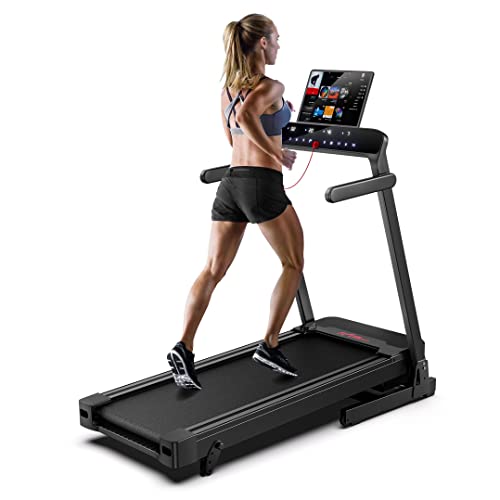Treadmill Non-Electric: The Eco-Friendly Fitness Solution
In a period dominated by electric makers and high-tech gadgets, the modest non-electric treadmill sticks out as a beacon of simpleness and effectiveness. Typically eclipsed by their high-tech equivalents, non-electric treadmills provide many advantages that cater to a sustainable lifestyle and a solid exercise. This blog site post will check out the advantages, performance, and variety of non-electric treadmills, making a strong case for their role in modern-day fitness regimens.
What is a Non-Electric Treadmill?
A non-electric treadmill, likewise referred to as a manual treadmill, runs without electric power. Rather, it relies on the user's energy to move the belt. This type of treadmill generally has a curved or flat running surface and a belt that moves as the user walks or runs, thus offering a full-body cardiovascular exercise.
Secret Features of Non-Electric Treadmills
| Feature | Description |
|---|---|
| Source of power | Manual operation (user-powered) |
| Design | Curved or flat treadmill surface |
| Mobility | Usually light-weight and simple to move |
| Resilience | Fewer mechanical components; frequently made from high-quality products |
| Expense | Typically more cost effective than electric treadmills |
| Footprint | Typically smaller sized, making them appropriate for minimal spaces |
| Sound Level | Quieter operation compared to electric versions |
The Advantages of Non-Electric Treadmills
1. Eco-Friendly
Non-electric treadmills are a sustainable option for fitness enthusiasts. Without any electricity intake, they minimize carbon footprints and total energy intake.
2. Affordable
With fewer mechanical parts and no wiring systems, non-electric treadmills are usually more budget friendly. click through the next internet site makes them available and enticing to people aiming to keep a healthy way of life without breaking the bank.
3. Increased Workout Intensity
Given that the user powers the belt, they have complete control over their exercise's intensity. The more difficult you press, the more calories you burn. This self-powered feature encourages a more engaged workout, pushing limits for a better physical fitness result.
4. Compact and Portable Design
Most non-electric treadmills have a lightweight construction and smaller footprint, making them easy to shop and transportation. This feature permits users to integrate cardio workouts into various settings, whether at home, in the workplace, or at a health club.
5. Lower Maintenance
Non-electric treadmills have fewer moving parts than electric versions, which equates to decrease maintenance costs and less mechanical failures over time.
Types of Non-Electric Treadmills
Non-electric treadmills come in various styles to deal with varied fitness requirements. Here's a short summary:
| Type | Description |
|---|---|
| Curved Manual Treadmill | Features a curved running surface for a natural gait. Outstanding for running and interval workouts. |
| Flat Manual Treadmill | A simple style comparable to standard treadmills however powered by the user's movement. |
| Foldable Manual Treadmill | Compact style that can be easily folded and stored away when not in use. Suitable for small home. |
| All-Terrain Manual Treadmill | Created for outdoor use, these treadmills often feature a rugged construct and traction control. |
Often Asked Questions (FAQ)
1. Are non-electric treadmills suitable for beginners?
Yes, non-electric treadmills can be appropriate for newbies. Users can change the intensity and speed of their workouts based on their fitness level.
2. Can I use a non-electric treadmill for running?
Definitely! Many non-electric treadmills, specifically curved designs, are designed for running. Their self-powered nature allows users to participate in jogging or sprinting.
3. What types of exercises can I perform on a non-electric treadmill?
Users can participate in numerous workouts, including walking, jogging, running, interval training, and even hill workouts by adjusting their position.
4. How do I preserve a non-electric treadmill?
Basic maintenance includes regularly checking the belt for wear, guaranteeing it is centered, and cleaning up the surface area to prevent debris from affecting motion.
5. Are non-electric treadmills loud?
Non-electric treadmills tend to be quieter than electric ones, as they do not have motors that can create sound. Users might still create sound based on their speed and weight.
Tips for Maximizing Your Non-Electric Treadmill Workouts
To get the most out of your non-electric treadmill sessions, consider the following pointers:
- Warm-Up Properly: Always start with a warm-up session to prepare your body for the exercise.
- Integrate Interval Training: Alternate between high-intensity sprints and moderate walking to boost calorie burn and improve endurance.
- Concentrate on Form: Maintain appropriate posture and form while running to lower the danger of injury.
- Hydration is Key: Keep water neighboring to stay hydrated throughout your exercises.
- Track Your Progress: Use a fitness tracker or smart device to monitor your exercise performance and progress gradually.
The non-electric treadmill stands out as a long-lasting, environmentally friendly piece of exercise equipment that successfully accommodates both newbies and skilled physical fitness enthusiasts. With its wide variety of advantages, consisting of cost-effectiveness, ease of usage, and mobility, it offers a sustainable alternative in the developing physical fitness landscape. For those wanting to streamline their workouts while embracing an active lifestyle, non-electric treadmills might be the perfect option. It's time to redefine your workout experience far from the diversions of innovation and toward the fundamentals that keep you healthy and fit!

